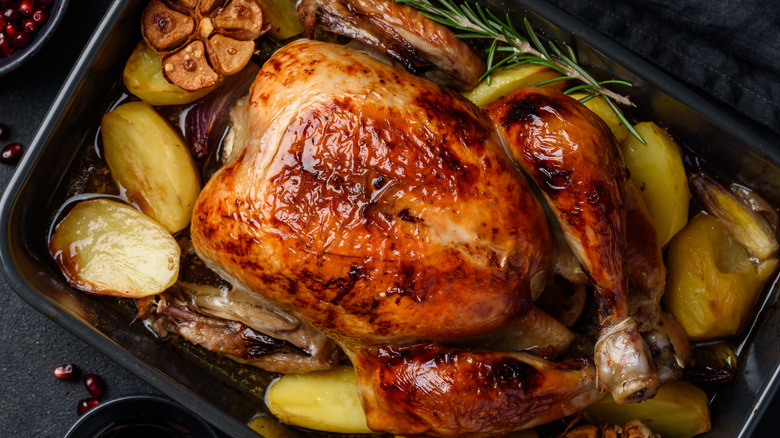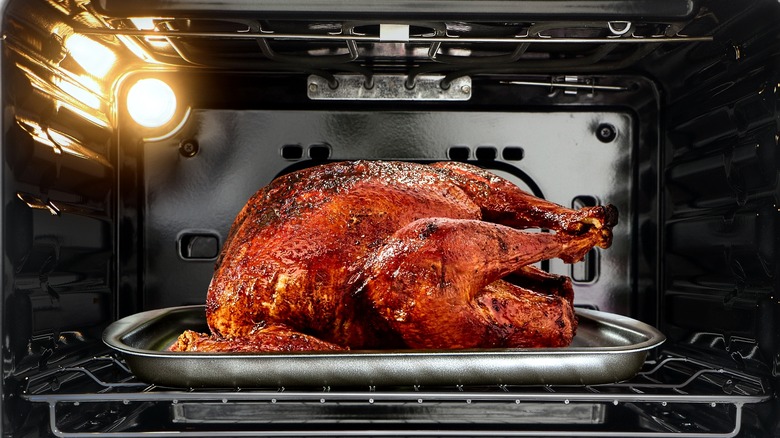Why You Should Put Your Turkey Into The Oven Legs First
The process of cooking a whole turkey has elicited volumes of literature on methods, tips, tricks, and procedures; and it's no wonder, considering the bird can weigh upwards of 30 pounds, according to the USDA. To further complicate matters, turkey has two types of meat that require different cooking times. Dark meat takes longer than white meat, and white meat has a tendency to dry out during cooking. Yet, despite the real possibility of failure, Americans cook 5.3 billion pounds of turkey a year, per Kansas State University.
Turkey is difficult to get right, but we can't blame the bird for our food flops; a better culprit may be the oven. Cooking requires heat, and ovens, with their variety of heating methods, are not consistent. Greatist says that most ovens use a radiant heat source located at the bottom of the oven. But Milk Street explains that most ovens often have hot spots — areas inside the oven where there is more heat than another area, which some turkey lovers have found a way around. The top and back of a gas oven tends to be hotter than the bottom and front by up to 20%, and the same is true of an electric oven to the tune of 5-15%. King Arthur Baking explains that the closer you are to the metal walls, the hotter it is. Knowledge is power though, and now that you know this about your oven, you can use it to your benefit.
Your oven is hotter in the back.
A perfectly cooked turkey will have crispy skin, tender dark meat, and juicy white meat. The USDA's standard advice is that the internal temperature of a turkey should be 165 degrees, and the agency recommends testing the innermost part of the wing, thigh, and thickest part of the breast. The problem is that by the time the thigh reaches 165 degrees, the breast has already begun to dry out. America's Test Kitchen explains that dark meat takes longer to cook than white meat because the tissue uses and stores oxygen differently. Turkey legs are fattier, denser, and require more time to reach the ideal temperature.
One excellent solution for this age-old dilemma is to put the turkey in the oven legs first. Taste of Home recommends sliding the turkey into the oven so that its legs face the back where all the heat is. The middle rack is the standard rack for most cooking because the air circulates evenly around the center, according to Real Simple. So before you start, ensure you've removed the top rack and left plenty of room for the bird. With the thighs facing the back, they'll get the extra heat they need, while the breasts, oriented towards the cooler part of the oven in front, won't dry out. This way, both types of meat can cook simultaneously at the appropriate temperature.

